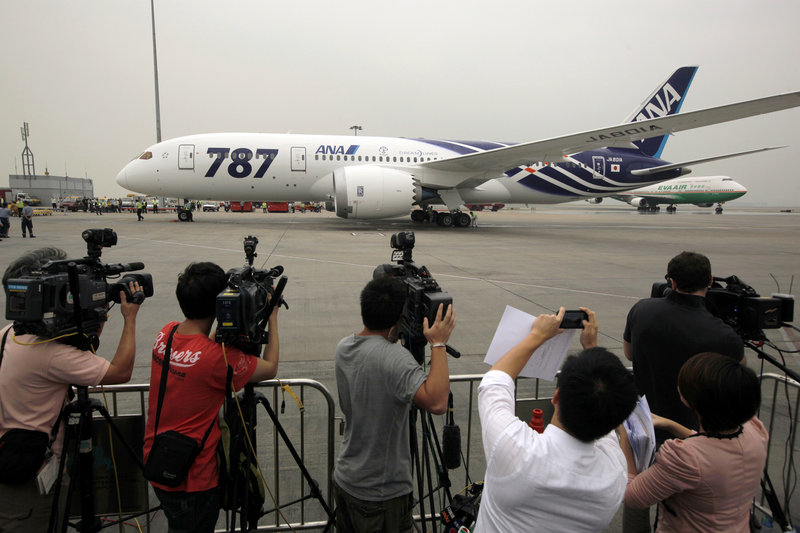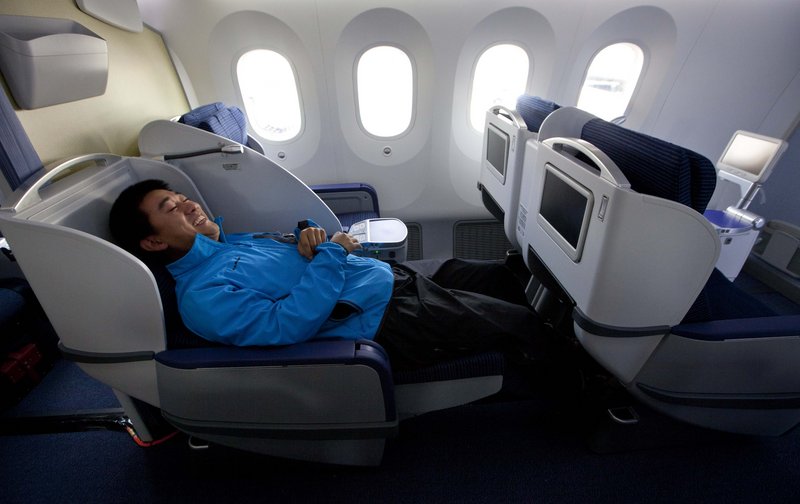ABOARD ANA FLIGHT 7871 – After a delay of more than three years, Boeing’s much-hyped jet, the 787, made its first commercial flight, from Tokyo to Hong Kong – and landed on time.
The All Nippon Airways flight was packed mostly with aviation reporters and enthusiasts, some of whom paid thousands of dollars for the privilege and treated the experience like a rock concert, clapping after lift-off and snapping photos for posterity.
“It’s silly, but it’s a little piece of history. New cars come out all the time, but how often do new planes come out?” said Stephanie Wood. She and her husband, Dean, of Davie, Fla., paid close to $19,000 in a charity auction for two business-class seats.
The 787, which is nicknamed The Dreamliner, is neither the fastest nor largest jet. But it is built out of ultra-lightweight materials and promises to be 20 percent more fuel-efficient than comparable aircraft, a big deal at a time of high oil prices.
Boeing is also pitching its 787 as a major upgrade for travelers. It was designed with larger windows, more space in overhead bins and improved lighting. The jet was also designed to provide air pressure and humidity levels that more closely resemble those on the ground, a feature that Boeing says will ease jet lag.
The 787’s inaugural flight came more than three and a half years late because Boeing was plagued with manufacturing problems. Parts for the jet are made by 52 suppliers scattered around the globe.
And, in a first for Boeing, large sections of the jet are built by these outside vendors and then cobbled together.
That process, aimed at saving money, has not been as smooth as hoped. Instead, Boeing has been plagued by delays that have forced it to pay airlines millions of dollars in penalties.
Boeing, which has a backlog of nearly 800 787s, said Wednesday that fewer of the jets – six at the most – would be delivered this year than previously forecast.
Boeing also faces pressure from European rival Airbus, which is designing its own lightweight composite jet, the A350. That plane is still several years away from flying.
The most noticeable feature of the 787 for fliers is its windows, which are 30 percent larger than those on older jets. Passengers no longer need to hunch forward to see the ground. Instead of shades, the windows come equipped with a glare-reducing, dimming system.
Other design features that stand out include:
• A roomier feel. Because passengers enter into a wide-open area with sweeping arches, claustrophobia is reduced just a bit, even if seats are as cramped as ever.
• Huge overhead bins. Boeing says there’s enough room for every passenger to have one carry-on bag.
• Less noise. New engines with a wave pattern around the exhaust reduce interior and exterior noise, although Boeing won’t say by how much. Wednesday’s flight seemed quieter, but a handheld sound meter registered noise levels similar to Boeing’s 777.
Because the composite materials the jet is built from are stronger and less likely to rust than traditional materials, Boeing says that the air inside its 787s won’t be as dry, with humidity doubled to 16 percent.
Send questions/comments to the editors.




Success. Please wait for the page to reload. If the page does not reload within 5 seconds, please refresh the page.
Enter your email and password to access comments.
Hi, to comment on stories you must . This profile is in addition to your subscription and website login.
Already have a commenting profile? .
Invalid username/password.
Please check your email to confirm and complete your registration.
Only subscribers are eligible to post comments. Please subscribe or login first for digital access. Here’s why.
Use the form below to reset your password. When you've submitted your account email, we will send an email with a reset code.